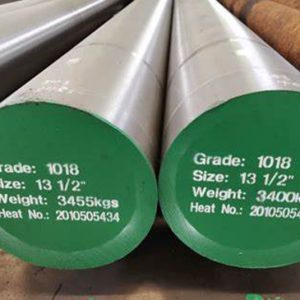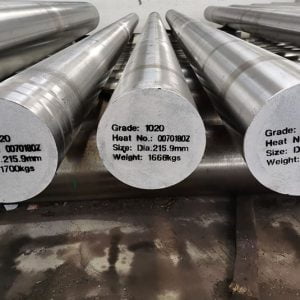Einführung
When it comes to selecting materials for various industrial and construction applications, carbon steel is often a preferred choice due to its durability, affordability, and versatility. However, not all carbon steel is created equal. There are numerous carbon steel grades, each with unique properties and best-suited applications. Understanding these differences is crucial for ensuring you choose the right grade for your specific needs. In this comprehensive guide, we will delve into the various carbon steel grades, comparing their characteristics, advantages, and ideal uses.
Understanding Carbon Steel Grades

What is Carbon Steel?
Carbon steel is a type of steel where the main interstitial alloying constituent is carbon. The American Iron and Steel Institute (AISI) defines carbon steel as having no more than 2.1% carbon content by weight. Carbon steel can be further classified into three main categories based on carbon content:
- Low Carbon Steel (Mild Steel): Contains up to 0.3% carbon.
- Medium Carbon Steel: Contains 0.3% to 0.6% carbon.
- High Carbon Steel: Contains 0.6% to 1.0% carbon.
The Importance of Carbon Content
The amount of carbon present in steel significantly influences its properties:
- Strength and Hardness: Increases with higher carbon content.
- Ductility and Weldability: Decrease as carbon content increases.
- Wear Resistance: Improves with higher carbon levels.
Classification of Carbon Steel Grades
Carbon steel grades are classified based on their composition and the manufacturing standards set by various organizations such as AISI and ASTM. These grades are identified by specific numbers that indicate their characteristics and suitable applications.
Comparing Key Carbon Steel Grades
Low Carbon Steel Grades
AISI 1018
- Composition: Approximately 0.18% carbon, 0.75% manganese
- Properties: Good weldability and machinability, moderate strength
- Anwendungen: Shafts, pins, gears, and structural components
AISI 1020
- Composition: Approximately 0.20% carbon, 0.50% manganese
- Properties: Excellent ductility, easy to form and weld
- Anwendungen: Automotive parts, pipes, and machinery parts
Medium Carbon Steel Grades
AISI 1045
- Composition: Approximately 0.45% carbon, 0.75% manganese
- Properties: Higher strength and hardness compared to low carbon steels
- Anwendungen: Gears, axles, bolts, and machinery parts
AISI 1055
- Composition: Approximately 0.55% carbon, 0.75% manganese
- Properties: Good balance of strength and ductility, better wear resistance
- Anwendungen: Cutting tools, hammers, and blades
High Carbon Steel Grades
AISI 1095
- Composition: Approximately 0.95% carbon, 0.40% manganese
- Properties: Very high strength and hardness, lower ductility
- Anwendungen: Springs, high-strength wires, and knives
AISI 1080
- Composition: Approximately 0.80% carbon, 0.75% manganese
- Properties: High hardness and tensile strength, suitable for heat treatment
- Anwendungen: Swords, cutting tools, and wear-resistant applications
Comparing Properties and Applications
The following table provides a comparison of these key carbon steel grades, summarizing their properties and typical applications:
| Kohlenstoffstahlsorte | Kohlenstoffgehalt (%) | Manganese Content (%) | Properties | Typical Applications |
|---|---|---|---|---|
| AISI 1018 | 0.18 | 0.75 | Good weldability, moderate strength | Shafts, pins, gears |
| AISI 1020 | 0.20 | 0.50 | Excellent ductility, easy to form | Automotive parts, pipes |
| AISI 1045 | 0.45 | 0.75 | Higher strength, good hardness | Gears, axles, bolts |
| AISI 1055 | 0.55 | 0.75 | Good strength, wear resistance | Cutting tools, hammers |
| AISI 1080 | 0.80 | 0.75 | High hardness, tensile strength | Swords, cutting tools |
| AISI 1095 | 0.95 | 0.40 | Very high strength, lower ductility | Springs, knives, high-strength wires |
Factors to Consider When Choosing Carbon Steel Grades
Mechanical Properties
When selecting a carbon steel grade, consider the mechanical properties required for your application:
- Zugfestigkeit: The maximum stress the material can withstand.
- Streckgrenze: The stress at which the material begins to deform plastically.
- Hardness: Resistance to deformation or scratching.
- Ductility: The material’s ability to undergo significant plastic deformation before rupture.
Herstellungsverfahren
Different carbon steel grades respond uniquely to various manufacturing processes such as:
- Welding: Low carbon steels are generally easier to weld.
- Machining: Medium carbon steels provide a good balance of machinability and strength.
- Forming: Low carbon steels are easier to form due to their higher ductility.
- Wärmebehandlung: High carbon steels can be heat treated to achieve high hardness and strength.
Environmental Considerations
The operating environment plays a crucial role in selecting the right carbon steel grade. Factors include:
- Korrosionsbeständigkeit: Some applications may require coatings or treatments to improve corrosion resistance.
- Temperature Conditions: High temperatures can affect the mechanical properties of steel.
- Wear and Tear: High carbon steels are better suited for high-wear applications.
Case Studies: Applications of Different Carbon Steel Grades
Autoindustrie
The automotive industry frequently uses low to medium carbon steel grades such as AISI 1018 and AISI 1045 for parts like gears, axles, and bolts due to their good balance of strength, machinability, and cost-effectiveness.
Construction Industry
In construction, AISI 1020 is often used for structural components due to its excellent ductility and weldability, making it ideal for forming and joining.
Tool Manufacturing
High carbon steel grades such as AISI 1095 are preferred in tool manufacturing for producing high-strength, durable tools like knives, springs, and high-strength wires.
Agriculture
Agricultural tools and machinery often utilize medium carbon steels like AISI 1055, which offer a good balance of strength and ductility, ensuring long-lasting performance in demanding conditions.
Future Trends in Carbon Steel Grades

Advances in Alloying
The development of new alloying techniques and materials is enhancing the properties of carbon steels, making them suitable for more specialized and demanding applications.
Sustainable Practices
The steel industry is moving towards more sustainable practices, including the use of recycled materials and energy-efficient manufacturing processes, which is influencing the development of new carbon steel grades.
Smart Manufacturing
Integration of smart manufacturing technologies such as AI and IoT is improving the precision and efficiency of producing carbon steel components, leading to better quality and consistency.
Schlussfolgerung
Selecting the right Kohlenstoffstahl grade involves a thorough understanding of the material properties, application requirements, and environmental conditions. By comparing the key characteristics of different grades, you can make an informed decision that ensures optimal performance and longevity for your projects. Whether you are in construction, automotive, or tool manufacturing, there is a carbon steel grade that fits your specific needs.
FAQ
What is the most common carbon steel grade used in construction?
AISI 1020 is one of the most common carbon steel grades used in construction due to its excellent ductility and weldability, making it ideal for structural components.
How do I choose the right carbon steel grade for my project?
Consider factors such as mechanical properties, manufacturing processes, and environmental conditions. Refer to the comparison table provided in this guide to identify the most suitable grade for your needs.
Can carbon steel be recycled?
Yes, carbon steel is highly recyclable. Recycling steel helps in conserving natural resources and reducing energy consumption in the manufacturing process.
What is the difference between low, medium, and high carbon steel?
Low carbon steel contains up to 0.3% carbon, medium carbon steel contains 0.3% to 0.6% carbon, and high carbon steel contains 0.6% to 1.0% carbon. Higher carbon content generally increases strength and hardness but reduces ductility.
Are there any coatings available to improve the corrosion resistance of carbon steel?
Yes, various coatings such as galvanizing, painting, and powder coating can be applied to carbon steel to enhance its corrosion resistance, depending on the specific requirements of the application.





